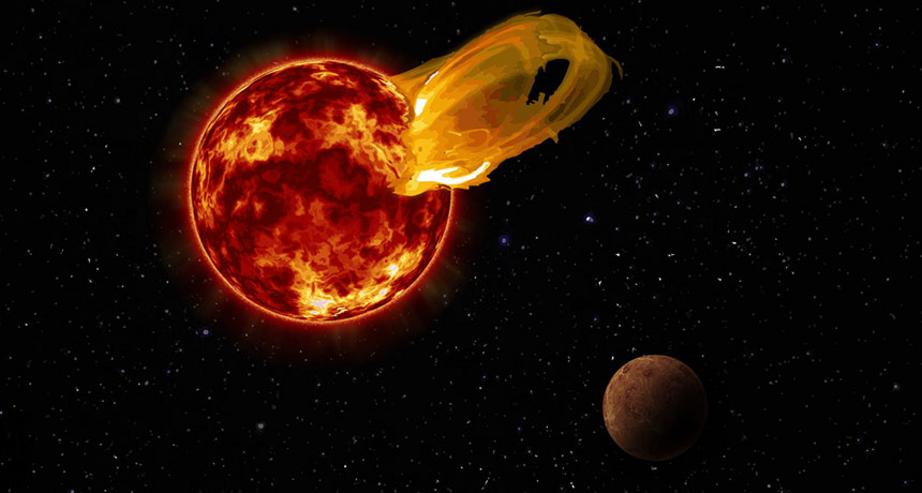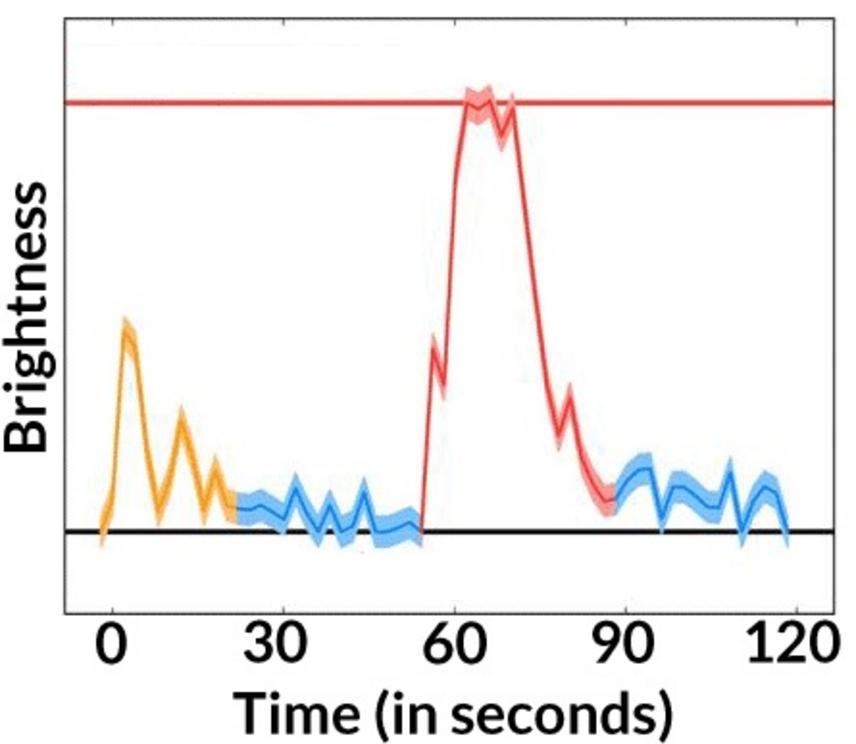Massive stellar flare may have fried Earth’s nearest exoplanet
Proxima Centauri has a temper. Earth’s nearest planet-hosting neighbor released a gigantic flare in March 2017, a new analysis of observations of the star shows. And that’s bad news for the potential for life on the star’s planet, Proxima b.
The star got 1,000 times brighter over 10 seconds before dimming again. That can best be explained by an enormous stellar flare, astronomer Meredith MacGregor of the Carnegie Institution for Science in Washington, D.C., and colleagues report February 26 in Astrophysical Journal Letters.

Proxima Centauri released a gigantic flare on March 24, 2017, fizzling hopes that this nearby star’s Earth-mass planet is habitable.
Roberto Molar Candanosa/Carnegie Institution for Science, SDO/NASA, JPL/NASA
Because Proxima b is so much closer to its star than Earth is to the sun, the flare would have blasted Proxima b with 4,000 times more radiation than Earth typically gets from the sun’s flares. “If there are flares like this at all frequently, then [the exoplanet] is likely not in the best shape,” MacGregor says.
Proxima b was one of the most sought-after sites for finding life outside the solar system. Just four light-years away, it has a mass about the same as Earth’s and probably has temperatures suitable for liquid water (SN: 12/24/16, p. 20). But its star is an M dwarf, a class of small dim stars notoriously prone to flares that could rip away their planets’ atmospheres (SN: 6/24/17, p. 18).
Peak energy
Proxima Centauri became 1,000 times brighter and then dimmed again over about two minutes (red lines). The black line refers to normal emission from the star, and the yellow and blue lines are smaller flares.

M. MacGregor
MacGregor and her colleagues reanalyzed data from a recent study led by astronomer Guillem Anglada of the Institute of Astrophysics of Andalusia in Granada, Spain. Anglada and his colleagues had observed Proxima Centauri with the Atacama Large Millimeter Array telescopes in Chile. The team saw extra light that it interpreted as a ring of dust analogous to the solar system’s Kuiper Belt, scattering the light in all directions, the team reported November 15 in Astrophysical Journal Letters.
But Anglada and his colleagues had averaged the amount of light over 10 hours of observations. That smeared out any short-term changes in the star’s brightness — such as a bright flare.
When MacGregor’s team reanalyzed the data, they found that all the excess light came from the same two-minute period on March 24. A massive flare explains all the extra light, she says — none of it was masquerading as a glittering dust ring.
Anglada says he and his colleagues are aware of the March 24 flare and are currently revising their original claim. But he says the flare can’t account for all the extra light, so the dust ring theory might still survive.
For full references please use source link below.

